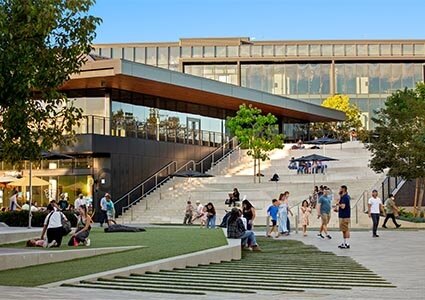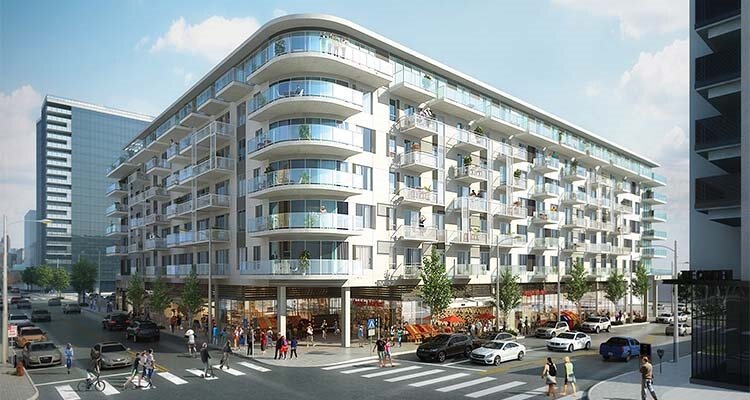Lee Shapiro of Kennedy Wilson Brokerage shares what’s hot in Hollywood’s commercial real estate market
I was fortunate to come out of college and recognize that commercial real estate was where I wanted to be. My first job in 1987 was in the sector and that’s where I still am today. I worked for Fred Sands Realtors, a large firm in Los Angeles. Fred was a wonderful man, a great marketer, and a fantastic mentor. During my time there, we developed a substantial presence throughout the markets. About 14 years ago, however, I moved over to Kennedy Wilson Brokerage,” Lee begins.

Lee Shapiro serves as Executive Vice President, Director of Retail for Kennedy Wilson Brokerage in Los Angeles. For the past 31 years, he has specialized in the sale and leasing of commercial investment properties throughout Southern California with a focus on office, retail, and development sites. Lee has extensive experience in assisting private capital and institutional owners and developers with the design and leasing of new projects as well as the repositioning of existing properties.
“While there’s no such thing as a typical day,” Lee continues, “there are regular scheduled meetings that we have with owners and brokers. I represent institutional and corporate owners as well as families, and as such, there are always catch-up calls, meetings, and reporting to be done. Part of our day typically involves meetings and tours with prospective tenants and buyers in the actual spaces.
“That said, as I’ve got older, I’ve also moved into a mentorship position, working with interns as well as new recruits. We’re very fortunate that we have a collaborative team culture. In our firm, instead of competing against each other, our agents collaborate on accounts. This is a strong strategy for success. We bring new recruits into the decision-making and deal room so that they can improve their knowledge and skills and be deployed into key roles much more quickly. My day-to-day involves working with my entire team, centering on the strategy for moving forward with deals, alongside negotiating and hopefully, celebrating closings,” he explains.
“I would say for me what is really thrilling is working with a developer and exploring the future development of a space. Being part of the process so the developer can achieve or exceed their rental structure for success years down the line is thrilling. It takes considerable experience to recognize when it’s time to stop negotiating terms and affect a transaction. Steering a course for mutual success and bringing the parties together through communication is an enjoyable element of the business,” Lee enthuses.
Commercial trends
Over the course of his career, Lee has experienced the peaks and troughs of the real estate market. “It’s like other sectors when the cost of capital rises. When the cost of borrowing goes up, it puts pressure on the ability to borrow, exerting downward pressure on prices. It puts pressure on developers and equity partners in terms of being able to take risks. When the markets start accelerating, we always look back and see how the peak rents of the cycle before are eclipsed by the next cycle. It’s all about being patient in this game.
“In terms of current trends,” he continues, “what we have been seeing as the most attractive type of commercial space in the market is second-generation restaurant space. That is honest commodity because there is much less risk to both the tenant and the landlord, since the landlord typically will need to deploy little to no capital except for transaction fees and the tenant will typically not have to go through the entire permitting and construction process, which can be protracted. Prospective tenants are not so willing to get involved in first-generation projects. As such, there’s been pressure on unimproved space coming to market where landlords have had to make plans to construct portions of the core improvements that tenants typically would have taken on themselves. Owners are now being asked to deliver warm shells, so that the tenant can simply walk in, put in flooring and fixtures, paint the walls, etc. The pendulum of responsibility and cost has been moving towards owners, hence why second-generation spaces are more attractive.
“In the Los Angeles area, with the construction of public transport over the past 15-to-20 years, which is novel for this part of the States, I think we’ll see an expansion in new commerce. The city has recognized the importance of public transport, and particularly the subway.”
Local expertise
Los Angeles has begun to experience the increasing trend of combining high-end communities and ground-floor retail, and today that trend continues. One of Hollywood’s most popular upcoming luxury communities, Modera Argyle, is welcoming its newest tenant, Bristol Farms, which signed a 15-year lease in the heart of Hollywood. With the area already being underserved by supermarkets, and the continued construction of high-end residential year-on-year, Bristol Farms joining the area’s growing region was an obvious move. Lee represented Mill Creek Residential in the transaction.
 “Bristol Farms is an incredible brand with a devoted following,” says Lee. “This new Hollywood location gives them immediate access to their target customer, who will be living right upstairs at Modera Argyle, as well as in the dense surrounding neighborhood. It’s a big win for Mill Creek, Bristol Farms, and the neighborhood. While the popular Trader Joe’s grocery store is just around the corner, the two brands specialize in different offerings, meaning the categories are complementary rather than competitive.”
“Bristol Farms is an incredible brand with a devoted following,” says Lee. “This new Hollywood location gives them immediate access to their target customer, who will be living right upstairs at Modera Argyle, as well as in the dense surrounding neighborhood. It’s a big win for Mill Creek, Bristol Farms, and the neighborhood. While the popular Trader Joe’s grocery store is just around the corner, the two brands specialize in different offerings, meaning the categories are complementary rather than competitive.”
Modera Argyle is located between Sunset and Hollywood Boulevards and sits adjacent to the Hollywood Palladium and across the street from Equinox Hollywood and the W Hotel and Residences. The mixed-use development is currently under construction, and expected completion is summer 2024. Modera Argyle is the second of Mill Creek Residential’s luxury offerings in the area. Hollywood’s residential population is growing thanks in large part to continued housing construction of higher-end communities. In the past decade, housing inventory has expanded in the submarket, and recent office and hotel construction has brought both higher-paying jobs and more affluent visitors to the area.
“Retail is fickle,” Lee explains, “and location plays an important role. As such, retailers are sensitive to their location in the city. There will always be established brands and companies in those areas that experience high footfall. However, those are limited commodities; there’s a limited amount of space and those owners are much more sensitive to their tenants. It is more challenging for newer brands to become tenants when they’re competing with known brands, in terms of owner risk assessment and securitization. Well-established brands will be able to pay their rent because they can leverage finance from alternative sites. Newer tenants don’t tend to have the financial security to put down a hefty deposit, and hence, it becomes more difficult for the younger brands to access those prime sites.
“It’s important to be able to analyze shopper demographics and tap into the experience of a seasoned realtor who understands the changing landscape and local market. Local expertise can help to identify those areas ripe for regeneration and investment opportunities. There’s opportunity in every market. It’s important to be patient and realize that every decade or so, it seems like we hit a rough patch. Lenders start pulling back and land and property remains undeveloped and empty until prices start to reset. Then up the mountain we climb again until the next cycle sets in, and the market starts to change. If you are patient, the return on investment tends to come,” Lee concludes.
